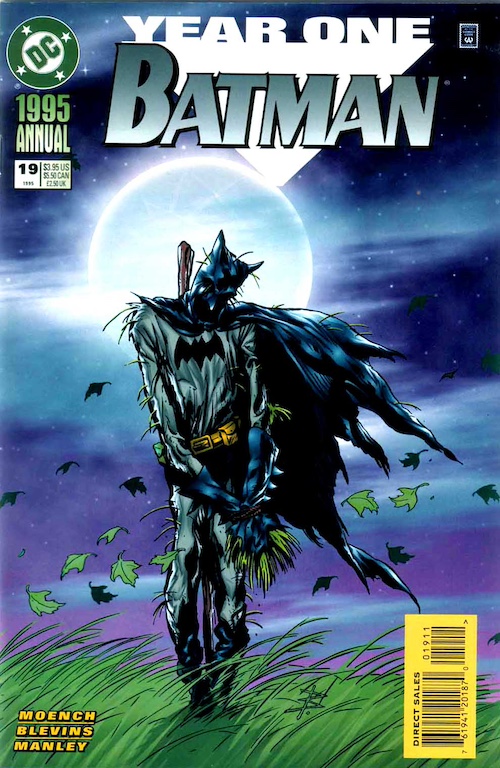
In September 1995, DC released Batman Annual #19 (“Scarecrow: Masters of Fear”) by Doug Moench, Bret Blevins, Mike Manley, and Stuart Chaifetz. Because this release came out post-Zero Hour, and since there had really been no official post-Crisis origin story for Scarecrow (Jonathan Crane) prior to this, Batman Annual #19 instantly became the ultimate canonical Modern Age origin story for the character. Significant portions of Batman Annual #19 were loosely based on Scarecrow debuts from prior canon—World’s Finest Comics #3 by Bill Finger, Bob Kane, and Jerry Robinson (1941) and Batman #189 by Gardner Fox, Sheldon Moldoff, and Joe Giella (1967)—but this was a definitively Modern version of Scarecrow.
Here’s a basic synopsis of the general plot of Batman Annual #19. Crane gets fired from his teaching job at the university, taking up the mantle of Scarecrow to enact revenge on his former fellow faculty members by terrorizing them with his patented Fear Gas. Leaving behind a piece of straw as a calling card at each crime scene, Scarecrow goes on a killing spree and also attacks the head of Fontana ChemCorp. Batman investigates, discovering that Scarecrow is Crane. He also learns more about Crane’s family and past, including information about his negative high school experience, murders he committed during high school while wearing a proto-Scarecrow costume, his college mentor’s suicide, and his subsequent takeover of his mentor’s job. Batman then visits Crane’s boobytrapped apartment where he experiences the effects of Fear Gas for the first time. Eventually, Batman busts Scarecrow in a cornfield, sending him to Arkham Asylum afterward.
Notably, Batman Annual #19 cemented the following facts:
First, Scarecrow debuts after Two-Face, at some point in Year One. Batman says that he’s already faced Two-Face, and the story even shows Scarecrow going to Arkham Asylum in a cell next to Two-Face at its end. At the time of Batman Annual #19‘s publication in 1995, Two-Face debuting prior to Scarecrow was actually already the line-wide status quo, so this reflected that. Batman Annual #19 has “Year One” cover-dressing as well.
Second, Crane is only twenty-three-years-old at the time of his debut as Scarecrow, having graduated from a four year Bachelor’s Degree program (in psychology and chemistry) at Gotham University one year prior. (This is especially funny because I’m fairly certain Batman Annual #19‘s “Masters of Fear” title is a pun meant to allude to a Master’s degree, which is a degree Crane specifically doesn’t earn in the story. Maybe the pun refers to Crane’s victims? Anyway, I digress.) The tale also reveals that Crane had become the protégé and assistant to the top professor in his department. After graduating, Crane used Fear Gas on his mentor, causing his suicide, after which Crane, despite only having an undergraduate degree, was hired as his replacement, thus becoming a new professor at the school.
Third, Crane’s parents are supposedly no longer living.
Fourth, Fontana ChemCorp is said to have enjoyed a monopoly in Gotham’s chemical market until three other companies arrived on the scene. Of the three other companies, only AlchemCorp is mentioned, but, as per Batman: The Killing Joke by Alan Moore and Brian Bolland (1988), one of the others at the time would have been Ace Chemical. Batman’s in-story journal entry dialogue implies that the arrival of market competition happened recently. Batman/Scarecrow 3D #1 by John Francis Moore and Carl Critchlow (1998) later names Wayne Chemical and Morrison Chemical as yet two other Gotham-based chemical companies, so its possible that one of these is the other mentioned in Batman Annual #19. Notably, 2009’s Batman #682 (by Grant Morrison and Lee Garbett) reveals that Apex Chemicals was bought out by Ace after supplying Dr. Death in Year One. Axis Chemicals, canon only in Tim Burton’s film universe, is also erroneously mentioned in Darwyn Cooke’s Batman: Ego (2001).
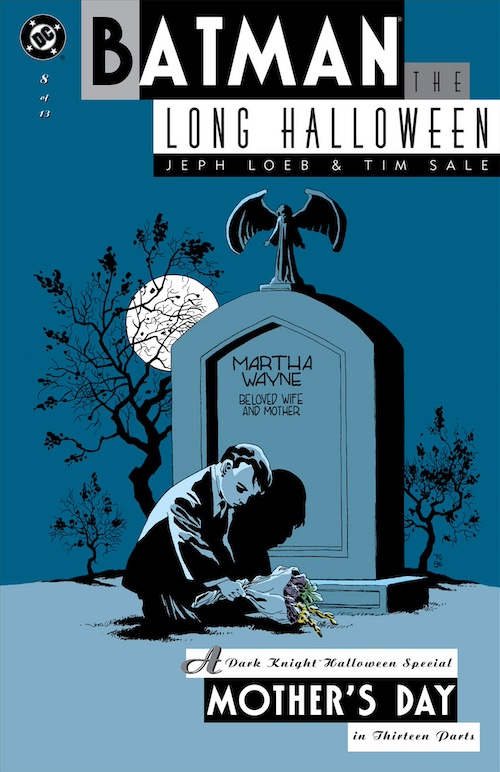
All the above information from Batman Annual #19 shaped the status quo for Scarecrow’s origin until two years later with the publication of Batman: The Long Halloween #8 by Jeph Loeb and Tim Sale (1997), which instituted the big retcon of moving Scarecrow’s debut prior to Two-Face’s debut. Notably, The Long Halloween #8 added context to Batman Annual #19‘s tidbit about Crane’s parents being dead, revealing that Crane supposedly strangled his own mother to death. Several other issues—including Batman Villains Secret Files and Origins #1 by Scott Beatty (October 1998), Batman: Dark Victory by Loeb and Sale (1999-2000), and Batman: Legends of the Dark Knight #137-138 by Doug Moench and Paul Gulacy (2001)—would re-emphasize the new status quo: a still canon Batman Annual #19, only now shifted prior to Two-Face’s debut. In the case of Batman: Legends of the Dark Knight #137-138, it actually directly shows flashbacks to parts of Batman Annual #19—including Crane’s negative high school experience, his mentor’s suicide, and his takeover of his mentor’s job.
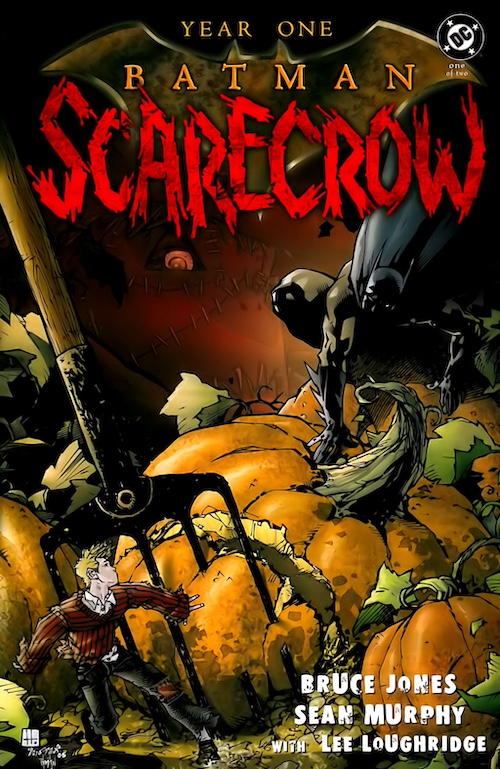
In 2005, Year One: Batman/Scarecrow #1-2 (by Bruce Jones and Sean Murphy) was published, ostensibly delivering a brand new Scarecrow origin story, one that gave additional back-story about Crane being raised by his wicked grandmother Marion Keeny. It also introduced readers to Scarecrow’s mom Karen Keeny-Crane and father Gerald Crane. However, both are not only shown to be still alive, they also factor heavily into the narrative of the story. For various reasons, including the anachronistic return use of “Year One” cover-dressing and titling, the contradictory inclusion of Robin (who didn’t debut until after Two-Face), and the contradictory inclusion of Crane’s parents (who were supposed to be dead), Year One: Batman/Scarecrow #1-2 was always generally regarded as non-canon. After all, nothing else in 2005 was showing that Scarecrow’s parents were alive or that he debuted prior to Robin and Two-Face. This story was a severe outlier and was regarded as such at the time.
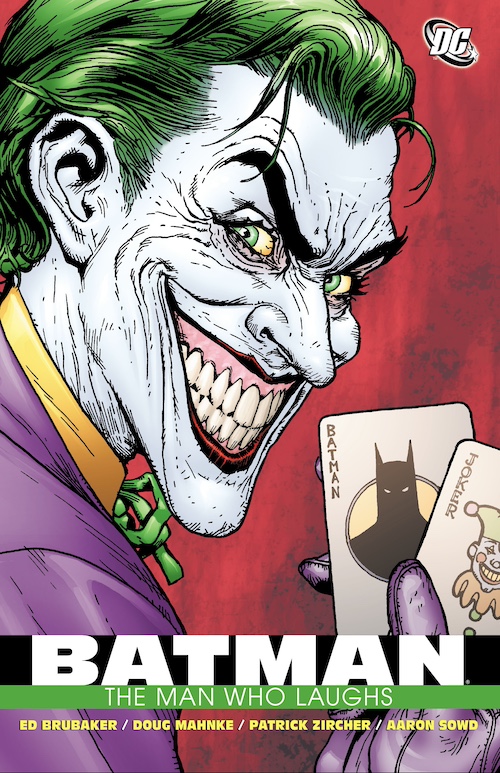
2005 also brought about the publication of Batman: The Man Who Laughs by Ed Brubaker and Doug Mahnke, which had some impact upon Batman Annual #19 by moving Joker’s debut into early Year Two, thus pushing Scarecrow’s debut into Year Two as well. The Man Who Laughs also specifically revealed that Ace Chemical opened roughly twenty years before Batman’s debut. Thus, either this was retconning the aforementioned chemical plant situation in Batman Annual #19 or, at the very least, was forcing readers to reinterpret Batman’s journal entry. Since the market competition now couldn’t have been recently emergent at the time of Scarecrow’s debut, this meant that Batman’s journal dialogue had to now be read as Batman simply reviewing Gotham’s history of chemical companies. Technically, while likely not Moench’s intent, the line can be read this way. In this regard, it’s less of a retcon, and more of a forced reader response shift. No matter your personal take, in sum, by 1996, Batman Annual #19 was still canon, but caveats now included Scarecrow debuting before Two-Face, newly, Scarecrow debuting in Year Two, and, also newly, a status quo change in regard to Gotham’s chemical market at the time of Scarecrow’s debut.

One year later, a significant retcon in Batman: Legends of the Dark Knight #202 by Christos Gage and Ron Wagner (“Cold Case,” 2006) placed Crane as a criminal psychology teacher at Gotham University as early as 1968. As such, Crane still caused his mentor to commit suicide, but it now happened in the 1960s, meaning Crane had been a teacher for decades and was currently much older than twenty-three at the time of his debut. Therefore, this retcon shifted Crane’s high school murders/experiences and the murder of his mentor to all occur in the 1960s, decades earlier. This meant that Crane was likely in his mid forties at the time of his debut as Scarecrow. In sum, by 1996, Batman Annual #19 was still canon, but caveats now included Scarecrow debuting before Two-Face, a status quo change in regard to Gotham’s chemical market at the time of Scarecrow’s debut, and, newly, all of Crane’s backstory shifting decades prior to make him much older at the time of his debut.

Another retcon (seemingly line-wide, across a couple separate issues) in 2008 made it so Crane was at some point a practicing psychiatrist in addition to being a college teacher. Joker’s Asylum: Scarecrow #1 by Joe Harris and Juan Doe (September 2008) makes mention of his psychiatry practice while Detective Comics #847 by Paul Dini and Dustin Nguyen (October 2008) shows a young Tommy Elliot meeting with Crane—a “driven young intern” at the university psychiatric hospital—in 1971. This was actually the very first canonical mention of Crane being an intern at a hospital. Prior to 2008, Crane was never once regarded as having more than an undergraduate degree. He certainly had never been referred to as a doctor before this moment. Joker’s Asylum: Scarecrow #1 and Detective Comics #847 not only confirmed the 2006 Legends of the Dark Knight #202 retcon about Crane’s older age, but also that Crane obtained more than just an undergraduate degree. Presuming Crane was in college for at least six years, plus in residency (interning) for two to three years, the youngest he could have been in 1971 would be around twenty-six-years-old. This means, as Batman: Legends of the Dark Knight #202 had previously hinted, Crane must have been around forty-five (born in 1945) at the time of debut as Scarecrow. (Several Batman Chronology Project site contributors have argued that Crane being forty-five at the time of his debut seems a bit too old, while also highlighting that fact that DC has a penchant for giving characters post-graduate and medical degrees at very young ages, all of which speaks to the possibility of Crane still being in his twenties at the time of his debut as Scarecrow. However, the overall history of Scarecrow retcons flies in the face of that direction, especially the fact that Batman: Legends of the Dark Knight #202 nodded to him teaching in the 1960s.) It’s worth mentioning that both Batman #523-524 by Moench and Kelley Jones (1995) and Batman: Legends of the Dark Knight #140 by Moench and Gulacy (2001) both indirectly address Scarecrow’s age by showing him target people who bullied him in high school. In these two arcs by Moench, some of these former bullies (which should be around Scarecrow’s same age) look a bit older while others look younger, so nothing truly conclusive can be gleaned from their appearance. In sum, by 2008, Batman Annual #19 was still canon, but caveats now included Scarecrow debuting before Two-Face, a status quo change in regard to Gotham’s chemical market at the time of Scarecrow’s debut, all of Crane’s backstory shifting decades prior to make him much older at the time of his debut, and, newly, Crane having had a psychiatry doctorate/practice.

Cut to 2009 and the release of the DC Universe Holiday Special 2009, which included “Unbearable Loss” by Scott Kolins, a Year Ten story that highlights Deadman meeting and helping Karen Keeny-Crane. It also shows a flashback to Marion Keeny raising Scarecrow. (“Unbearable Loss” occurs in Year Ten because it takes place specifically around Friday, December 25. If we go by the real-world calendar, this places the tale either in 1992, 1998, or 2009. Since “Unbearable Loss” is clearly an “Early Period” story, it cannot take place in 2009. And since it is a Deadman story, it cannot take place in 1992, which is before his debut. 1998 i.e. Year Ten it is.) By showing the Keenys, “Unbearable Loss” functioned, at the very least, as a retcon that canonized the flashback portions of Year One: Batman/Scarecrow #1-2 while still regarding its main narrative as out-of-continuity. It’s also possible that Karen still being alive is not a retcon and, as one can do with the chemical company situation, simply re-interpret the urtext. The fanwank here is simply that the story of Crane’s parents being dead (including his mom’s strangling) was false but widely believed to be true, with even Batman buying the bogus story—as referenced in both Annual #19 and The Long Halloween #8. That’s up to one’s own personal headcanon, though. Is it possible that “Unbearable Loss” wanted to canonize the main narrative of Year One: Batman/Scarecrow #1-2 too? If that were so, Year One: Batman/Scarecrow #1-2 would require massive caveats, including the reader fully ignoring that it is meant to be an origin story for Scarecrow. As such, the Batman Chronology Project has left Year One: Batman/Scarecrow #1-2 off the timeline, opting instead to regard it as non-canonical material that “Unbearable Loss” has re-contextualized. In sum, by 2009 (and for the final two years of the Modern Age), Batman Annual #19 was still canon, but caveats now included Scarecrow debuting before Two-Face, a status quo change in regard to Gotham’s chemical market at the time of Scarecrow’s debut, all of Crane’s backstory shifting decades prior to make him much older at the time of his debut, Crane having had a psychiatry doctorate/practice, and, newly, a status quo change in regard to Crane’s parents being alive.
All in all, Scarecrow’s is one of the more convoluted origins of the Modern Age, with more significant retcons attached to it compared to other members of Batman’s rogues gallery, but there you have it!
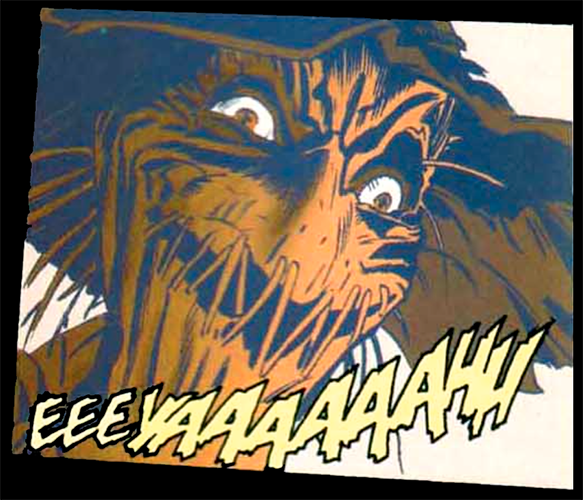



Traduzir textos com a câmera
Do you ever intend to create a chronological timeline for specific characters?
I know a lot of your timeline covers Batman’s perspectives and confrontations with his villains.
But for example, would you be excited to make a timeline for the scarecrow using the criteria of what is and isn’t canon in your modern age timeline?
Hey João! I’d love to do something like that, but that would be a task for some time down the road when the Batman timelines are at a place that feels more settled. I started the Batman timelines 15 years ago, and they still get almost daily edits and changes to this very day! Not to mention, DC just won’t stop releasing new material lol. But maybe one day—if I were to start with a Bat-villain chronology, I’d probably start with Poison Ivy, though, just because she’s my fave!